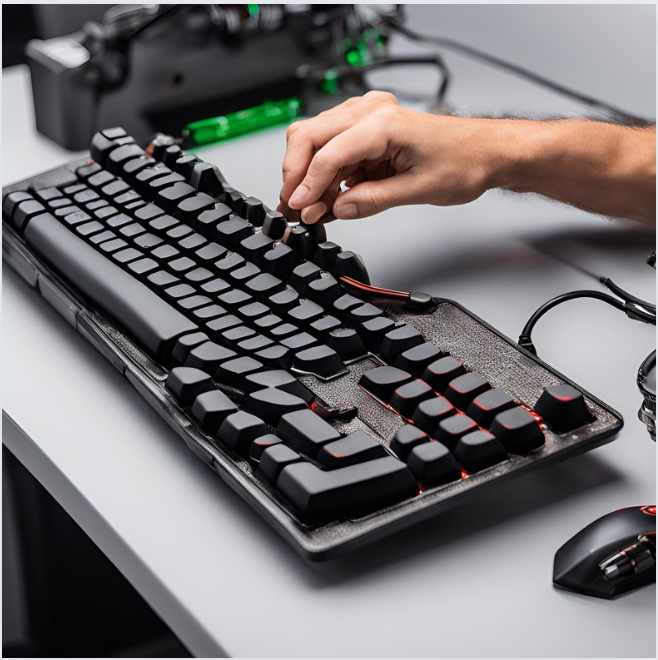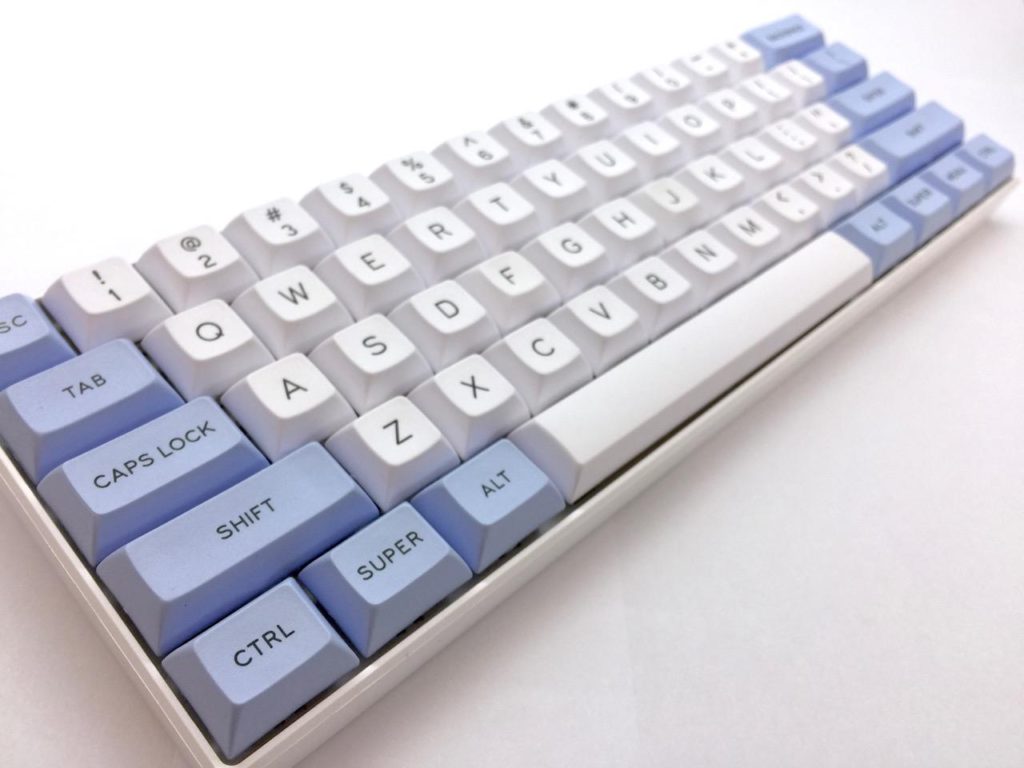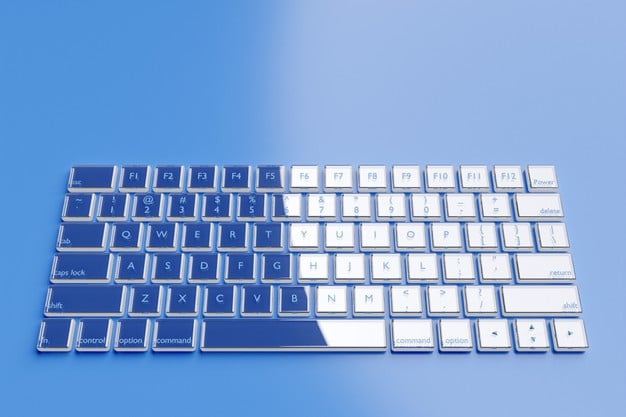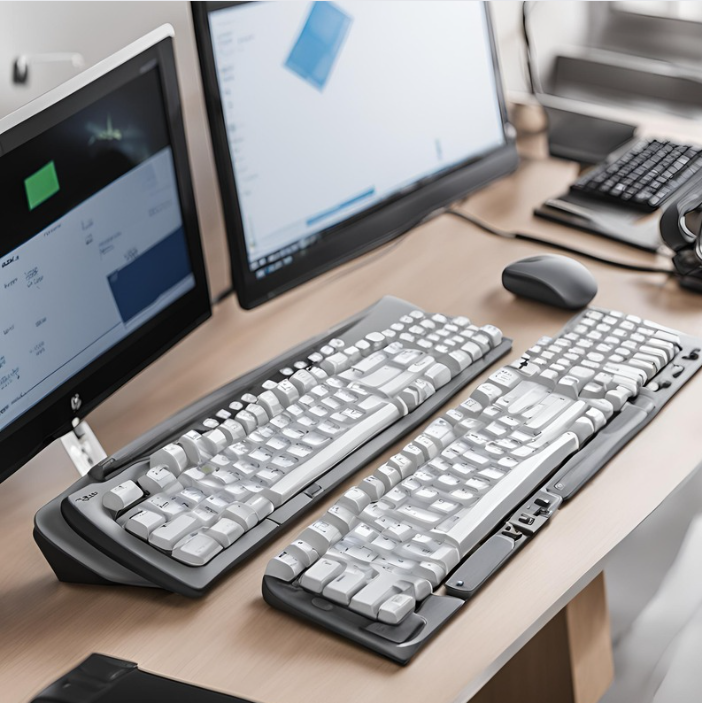Introduction
- Hook: Highlight the rising popularity of mechanical keyboards and their unique features.
- Significance: Discuss the importance of choosing the right mechanical keyboard for enhanced typing and gaming experiences.
- Overview: Provide a brief overview of what readers can expect to learn from the guide.

Section 1: Understanding Mechanical Keyboards
- Introduction to Mechanical Keyboards: Define what mechanical keyboards are and how they differ from membrane keyboards.
- History of Mechanical Keyboards: Explore the origins and evolution of mechanical keyboards.
- Anatomy of a Mechanical Keyboard: Break down the components of a mechanical keyboard, including key switches, keycaps, and the keyboard frame.
Alright, let’s start by unraveling the mystery behind mechanical keyboards. You’ve probably heard the buzz about them, but what exactly sets them apart? Let’s dive in and find out!
Introduction to Mechanical Keyboards: So, what’s the deal with mechanical keyboards? Well, unlike their membrane counterparts, mechanical keyboards feature individual mechanical switches beneath each key. These switches are like tiny springs that provide tactile feedback and audible clicks when pressed, giving you a satisfying typing experience.
History of Mechanical Keyboards: Now, let’s take a trip down memory lane. Did you know that mechanical keyboards have been around since the early days of computing? They were once the standard, prized for their durability and superior typing feel. While they fell out of favor for a while due to cost concerns, they’ve recently made a big comeback thanks to their popularity among enthusiasts and gamers.
Anatomy of a Mechanical Keyboard: Ever wondered what’s going on under the keys? Let’s break it down. A mechanical keyboard consists of several key components, including the key switches themselves, the keycaps (the part you actually press), and the keyboard frame. Each component plays a crucial role in determining the overall typing experience and aesthetic appeal of the keyboard.
By understanding the basics of mechanical keyboards, you’ll be better equipped to appreciate their unique features and advantages. So, buckle up and get ready to embark on a journey into the fascinating world of mechanical keyboards!

Section 2: Types of Mechanical Key Switches
- Introduction to Key Switches: Explain the role of key switches in determining typing feel and performance.
- Common Key Switch Types: Discuss popular key switch options such as Cherry MX, Razer, and Logitech switches.
- Comparison of Key Switch Characteristics: Compare key switch characteristics such as actuation force, actuation point, and tactile feedback.
Alright, now that we’ve got a grip on what makes mechanical keyboards tick, let’s talk about the heart of the matter: key switches. These little guys are the unsung heroes of the typing experience, dictating everything from how your keyboard feels to how it sounds. Let’s explore the wonderful world of mechanical key switches together!
Introduction to Key Switches: Picture this: you’re typing away on your keyboard, and with each keystroke, you feel a satisfying click or bump. That sensation? That’s all thanks to the key switch lurking beneath each keycap. These switches come in a variety of flavors, each with its own unique characteristics and feel.
Common Key Switch Types: Now, let’s meet the stars of the show: the key switch types. You’ve got your Cherry MX switches, known for their smooth action and satisfying tactile bump. Then there’s Razer switches, prized for their lightning-fast actuation and clicky feedback. And let’s not forget about Logitech switches, famous for their quiet operation and durability. With so many options to choose from, there’s a key switch out there for every typing style and preference.
Comparison of Key Switch Characteristics: Now, here’s where things get interesting. Each key switch type has its own set of characteristics, like actuation force, actuation point, and tactile feedback. Actuation force refers to the amount of pressure needed to register a keystroke, while actuation point is the distance at which the key press is registered. Tactile feedback, on the other hand, refers to the sensation you feel when pressing a key, whether it’s a satisfying click or a subtle bump.
By understanding the different types of mechanical key switches and their characteristics, you’ll be better equipped to choose the perfect keyboard for your typing needs. So, whether you’re a fan of clicky switches, tactile switches, or linear switches, there’s a world of options out there waiting to be explored!

Section 3: Choosing the Right Mechanical Keyboard
- Factors to Consider: Discuss important factors to consider when choosing a mechanical keyboard, including typing feel, switch type, keyboard size, and customization options.
- Typing vs. Gaming Keyboards: Highlight the differences between keyboards optimized for typing and those designed for gaming.
- Budget Considerations: Provide options for different budget ranges and discuss the trade-offs between price and features.
Alright, now that we’ve got a handle on the inner workings of mechanical keyboards and the different types of key switches available, it’s time to tackle the million-dollar question: how do you choose the right one for you? Don’t worry, we’ve got you covered. Let’s dive into the world of mechanical keyboard selection together!
Factors to Consider: First things first, let’s talk about the factors you should keep in mind when choosing a mechanical keyboard. Think about things like your typing style, preferred key switch type, keyboard size, and any special features you might want, like RGB lighting or customizable macros. By considering these factors upfront, you can narrow down your options and find the perfect keyboard for your needs.
Typing vs. Gaming Keyboards: Next up, let’s talk about the age-old debate: typing keyboards vs. gaming keyboards. While both types of keyboards can be used for both tasks, they’re optimized for different purposes. Typing keyboards typically prioritize comfort and tactile feedback, while gaming keyboards often focus on features like fast actuation and customizable lighting. Consider how you’ll be using your keyboard most often and choose accordingly.
Budget Considerations: Ah, budget – the ultimate deciding factor for many of us. The good news is, there’s a mechanical keyboard out there for every budget. Whether you’re looking to splurge on a high-end gaming keyboard with all the bells and whistles or stick to a more budget-friendly option, there are plenty of choices available. Just remember that, like most things in life, you get what you pay for – so be sure to balance cost with features and build quality.
By taking these factors into account and doing a little research, you’ll be well on your way to finding the perfect mechanical keyboard for your needs. So go ahead, explore your options, and get ready to take your typing or gaming experience to the next level with the perfect keyboard by your side!

Section 4: Customization and Modification
- Introduction to Customization: Discuss the appeal of customizing mechanical keyboards to suit individual preferences.
- Keycap Materials and Profiles: Explore different keycap materials and profiles and their impact on typing feel and aesthetics.
- Switch Modding: Discuss popular switch modification techniques such as lubing, spring swapping, and stem swapping.
- Keyboard Modifications: Explore options for modifying keyboard layouts, adding custom keycaps, and implementing backlighting effects.
Alright, now that we’ve covered the basics of choosing the right mechanical keyboard, let’s talk about taking things to the next level: customization and modification. One of the coolest things about mechanical keyboards is the ability to tailor them to your own personal preferences. So, grab your soldering iron and let’s dive into the world of keyboard customization together!
Introduction to Customization: First things first, let’s talk about why customization is so awesome. With a mechanical keyboard, you’re not limited to just the keys and switches that come out of the box. You can swap out keycaps, change the switches, modify the layout – the possibilities are endless! Customization isn’t just about making your keyboard look cool (although that’s definitely a bonus) – it’s also about optimizing it for your own unique typing style and preferences.
Keycap Materials and Profiles: Now, let’s talk about one of the most popular ways to customize your keyboard: keycaps. Keycaps come in a variety of materials, from ABS plastic to PBT plastic to metal and even wood. Each material has its own unique feel and sound, so you can choose the one that suits you best. And don’t forget about keycap profiles – whether you prefer the classic OEM profile or something more exotic like SA or DSA, there’s a profile out there for everyone.
Switch Modding: Next up, let’s talk about modding your switches. This is where things get really fun. You can lube your switches to make them smoother and quieter, swap out the springs to change the feel, or even replace the stems to create your own custom switches. It’s like tuning up a car – except instead of horsepower, you’re optimizing for typing feel and sound.
Keyboard Modifications: Last but not least, let’s talk about modifying the keyboard itself. You can change the layout to suit your needs, add custom backlighting effects, or even build your own custom keyboard from scratch. It’s like building a PC – except instead of components, you’re assembling switches, keycaps, and a PCB (printed circuit board).
By customizing and modifying your mechanical keyboard, you can create a truly unique and personalized typing experience that’s tailor-made just for you. So go ahead, unleash your creativity, and make your keyboard truly your own!

Section 5: Maintenance and Care
- Cleaning and Maintenance: Provide tips for cleaning and maintaining mechanical keyboards to prolong their lifespan and performance.
- Preventive Maintenance: Discuss strategies for preventing common issues such as key chatter, keycap fading, and switch malfunction.
- Troubleshooting: Offer troubleshooting tips for addressing common mechanical keyboard problems.
Alright, now that you’ve got your dream mechanical keyboard all set up and customized to perfection, it’s time to talk about keeping it in tip-top shape. Just like any other piece of tech, mechanical keyboards need a little TLC from time to time to keep them running smoothly. So, let’s dive into some maintenance and care tips to ensure your keyboard stays in prime condition for years to come!
Cleaning and Maintenance: First things first, let’s talk about cleaning your keyboard. Over time, dust, dirt, and crumbs can accumulate between the keys and inside the switches, affecting performance and causing keys to stick or feel mushy. Regular cleaning is key to keeping your keyboard looking and feeling its best. You can use compressed air, a soft brush, or a keycap puller to remove debris from between the keys, and a damp cloth or cotton swab to clean the keycaps and keyboard frame.
Preventive Maintenance: In addition to regular cleaning, there are a few preventive maintenance tasks you can perform to keep your keyboard in top condition. Lubing your switches can help reduce friction and prolong their lifespan, while regularly checking for loose or damaged keycaps and stabilizers can prevent issues before they arise. It’s also a good idea to keep your keyboard away from liquids and excessive heat, as these can cause damage to the electronics.
Troubleshooting: Despite your best efforts, you may encounter issues with your keyboard from time to time. Whether it’s keys that aren’t registering, a malfunctioning backlight, or a sticky switch, don’t panic – most problems can be easily fixed with a little troubleshooting. Check the connection, clean the affected area, or try resetting the keyboard firmware. If all else fails, don’t hesitate to reach out to the manufacturer for assistance.
By following these maintenance and care tips, you can ensure that your mechanical keyboard stays in peak condition and continues to provide you with a satisfying typing experience for years to come. So go ahead, show your keyboard some love, and enjoy countless hours of typing bliss!

Section 6: Advanced Topics and Resources
- Advanced Customization Techniques: Explore advanced customization techniques such as soldering, PCB modification, and firmware flashing.
- Community and Resources: Highlight online communities, forums, and resources for enthusiasts interested in learning more about mechanical keyboards.
- Future Trends and Developments: Discuss emerging trends and developments in the mechanical keyboard industry, such as optical switches, modular keyboards, and open-source firmware.
Alright, now that you’ve mastered the basics of mechanical keyboards and learned how to keep yours in top shape, it’s time to delve into some more advanced topics and resources. Whether you’re looking to take your keyboard customization to the next level or connect with fellow enthusiasts, there’s a whole world of knowledge waiting to be explored. So, let’s dive in and uncover some hidden gems together!
Advanced Customization Techniques: Ready to level up your keyboard customization game? From soldering and PCB modification to firmware flashing and switch tuning, there’s no shortage of advanced techniques to explore. Dive into online communities and forums to learn from experienced enthusiasts and discover new ways to personalize your keyboard to perfection.
Community and Resources: Speaking of online communities, there’s a vibrant and passionate community of mechanical keyboard enthusiasts out there just waiting to welcome you with open arms. From Reddit’s r/mechanicalkeyboards to Discord servers and enthusiast forums, there’s no shortage of places to connect with like-minded individuals, share your projects, and seek advice.
Future Trends and Developments: As with any technology, the world of mechanical keyboards is constantly evolving. Keep an eye out for emerging trends and developments, such as new switch designs, innovative keyboard layouts, and cutting-edge customization tools. Whether you’re a seasoned enthusiast or just starting out, staying informed about the latest trends and developments can help you stay ahead of the curve and make informed decisions about your keyboard setup.
By delving into advanced topics and tapping into the wealth of resources available online, you can continue to expand your knowledge and take your mechanical keyboard journey to new heights. So, go ahead, dive into the world of mechanical keyboards, and let your creativity run wild!

Conclusion
- Summary: Recap key takeaways from the guide, emphasizing the importance of choosing the right mechanical keyboard for individual needs and preferences.
- Encouragement: Encourage readers to explore the world of mechanical keyboards further and experiment with customization options.
- Closing Statement: Reinforce the value of mechanical keyboards as versatile and customizable tools for enhanced typing and gaming experiences.

